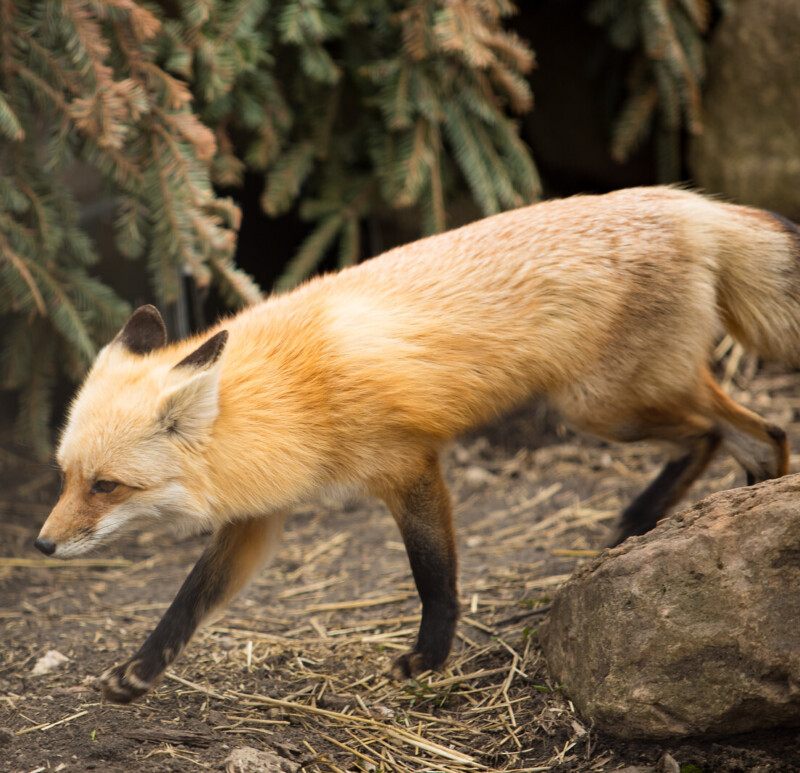Photo by Kmiecik Imagery
Red Fox
Vulpes vulpes
Description:
A red fox has a reddish-brown coat sprinkled with light-tipped hairs. The chest and underside of the neck are white. Distinguishing marks include black ears and feet and a white-tipped tail.
Size:
A red fox measures 24 -28 inches (61.0-71.1 cm) in length, not including the tail, which adds an additional 14-17 inches (35.6-43.2 cm). Red Foxes average 8-12 pounds (3.6-5.4 kg) in weight, but often appear heavier than this due to their thick coats.
Adaptations:
As a hunter, the red fox has many adaptations that help it catch its prey.
- Foxes have excellent senses of eyesight, hearing, and smell.
- Their sharp, pointed teeth are typical to carnivores and help them to tear through meat.
- The colors of the fox’s fur blend in with its surroundings and allow it to camouflage well.
Diet:
Foxes consume a variety of small animals, including rabbits, mice, and birds. Although classified as carnivores (meat-eaters), they will also eat a variety of plant material such as berries and fruits. The fox’s diet changes seasonally depending on what is available. A red fox will hunt even if it is no longer hungry, caching the extra food by burying it under leaves or dirt. At Cosley Zoo, the foxes are fed a commercial canine diet, as well as meat such as chicken, quail and mice.
Reproduction:
Red foxes mate between January and March. The female gives birth in March or April after a 51-day gestation period. The four to six young (called “kits”) have closed eyes and dark fur when they are born. The female cares for the kits while the male provides them with food. They will remain in the den for about a month and then they will come to the entrance to play and feed. At this point, the parents will bring back live prey, which is given to the kits to teach them how to hunt. The youngsters leave their parents in the fall to fend for themselves.
Shelter and space needs:
Although the red fox occupies many different habitats, it seems to prefer to live in a mixture of forest and open country. The normal territory of the fox ranges 1 to 2 miles from its burrow. The burrow itself is usually the abandoned den of another animal, such as a rabbit or woodchuck. Even though they have lost much of their natural habitat, foxes have adapted remarkably to cohabitation with humans.
Life expectancy:
Red foxes in human care can live up to 10 or 12 years, with a maximum of 15. In the wild, their life expectancy is an average of 3-5 years.
Relationship with man:
Although foxes have gained a reputation for killing chickens, this behavior is not as widespread as many believe. Foxes actually provide a service for farmers by consuming small mammals (such as mice) and insects that are detrimental to their crops.
Fun Facts:
- When a fox is pouncing a mouse, it jumps straight up in the air and points all four legs straight down to pin the mouse to the ground as the fox lands.
- Humans are the most significant predators of red foxes.
- If you come to Cosley Zoo and think you smell a skunk, it’s probably the foxes. Foxes produce a skunk-like odor that they use to mark their territories.






